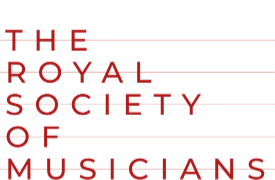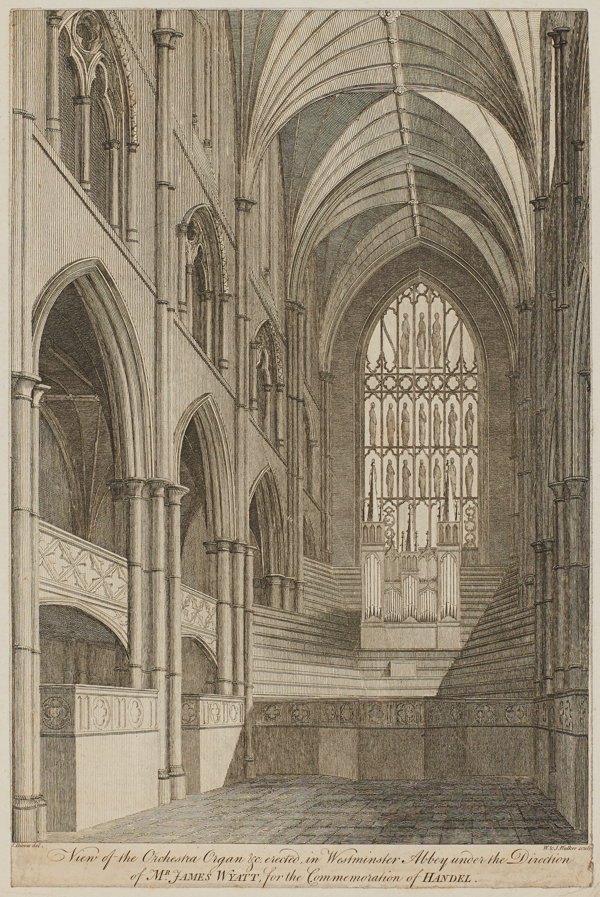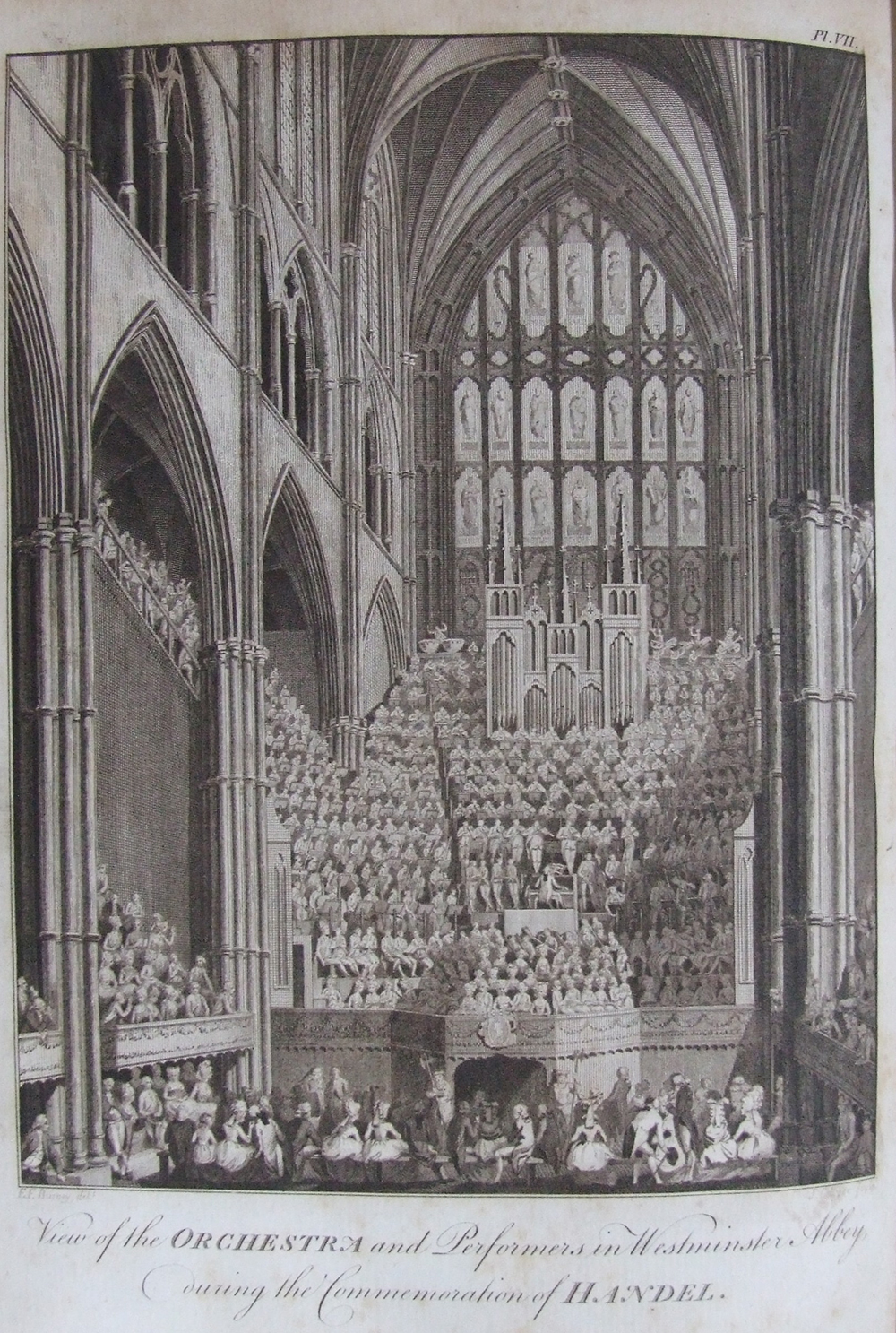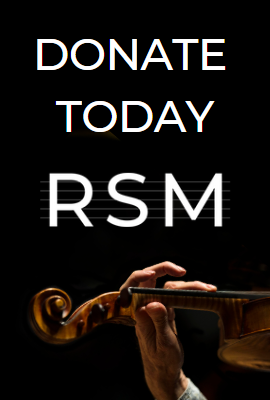Archive item of the month – July 2020
Music Festivals in Britain
The eighteenth century saw the foundation of many private and public music societies. In the earlier part of the century, the majority of commercial aspects of public performances were primarily the result of theatre seasons, with the Lenten oratorio season for non-staged performances (with texts of religious content) drawing the biggest potential audiences. In 1715, the cathedral choirs of Hereford, Gloucester and Worcester established the “Music Meeting” which became the Three Choirs Festival. Music festivals began across England, including Salisbury (1740), Birmingham (1768), and Norwich (1788). However, the real catalyst for the further expansion of this new commercial and/or philanthropic genre was the “Handel Commemoration” in London in 1784. This festival of Handel’s music was on a scale not seen before, and was reported across the country and beyond through many newspaper advertisements and accounts. In the following year, Charles Burney’s An Account of the Musical Performances in Westminster-Abbey and the Pantheon, May 26th, 27th, 29th; and June the 3d, and 5th, 1784, in Commemoration of Handel was “Printed for the Benefit of the Musical Fund” (or “Fund for Decay’d Musicians” as The Royal Society of Musicians was then known). Burney’s lavishly produced Account was published in London, a smaller one in Dublin and in a German translation by Johann Joachim Eschenburg (1743-1820) printed in Berlin in the same year (Nachricht von George Friedrich Händel’s Lebensumständen, und der ihm zu London im Mai und Jun. 1784 angestellten Gedächtnissfeyer / Karl Burney, aus dem Englischen übersetzt vom Johann Joachim Eschenburg).
The Handel commemoration concerts were conceived in 1783 by Richard 7th Viscount Fitzwilliam (1745-1816), Sir Watkin Williams Wynn (1749-1789) and Joah Bates (1741-1799) to celebrate the centenary of the birth of George Frideric Handel (based on the old calendar as noted on his tomb). The performances were on a scale then unprecedented in England. With Westminster Abbey being the venue for four of the five performances, the interior was substantially altered to accommodate the visiting multitudes: much carpentry was undertaken with the construction of galleries around the West End for audience elevated above the ground level, as well as staging created in a vertical aspect which brought the incredible 525 performers of the chorus and orchestra together. On this staging was also the new pipe organ made for Canterbury Cathedral, assembled in the Abbey for the Festival before being dismantled and delivered to Canterbury. Tickets for the concerts were expensive; slightly cheaper ones were available for attendance at the rehearsals, thereby allowing differing classes of the public to experience the occasion and what must have been an astonishing sound for that time. The money raised in the 1784 festival totalled £6,000 of which £1,000 went to the Westminster Hospital, the remainder being for the benefit of the Society of Musicians.
View of the orchestra, organ, &c, erected in Westminster Abbey under the direction of James Wyatt for the Commemoration of Handel in the European Magazine and London Review (London: J. Sewell, 25 May 1784)
Charles Burney, An Account (London: 1785), Plate VII
While these Handel festivals were a huge success and were repeated for several years, in the 1790s they failed to be commercially viable. The festivals comprised concerts which involved several hundred performers and were the forerunners of the huge Crystal Palace concerts of the mid-late nineteenth century (some of which involved thousands of performers); they were the start of monumental and experiential festivals.
These immersive festivals emulated in cities such as York (1791) and resulted in enormous socio-economic activity in each place. Festivals developed and a pattern can be seen in the provincial cities where the concerts were held in the biggest venues (Cathedrals and Assembly Halls), with performances in the mornings and evenings, very often culminating in a Grand Fancy Dress Ball. The apparatus for these festivals, including the many note-worthy musicians, carpentry, hotels, catering, travel, printing, publishing and advertising, fancy dress, wig makers, etc., brought great financial advantage to each town; all the surrounding middle classes would want to attend and be seen to attend these events. It was emulated by cathedral towns and new industrial centres with an element of competition to be the biggest and best, attracting the leading performers from London and bringing crowds to the cities for the festival period. The festivals brought large-scale performances to large-scale audiences, and established the ‘English choral tradition’ which continues to flourish today. The association of such festivals with fundraising for charitable causes – notably local hospitals – generated interest and support from a wider public, and ensured that the festival was an essential part of the social calendar for the affluent, as well as enabling the growing middle classes to access and take part in high quality musical performances.
Following the demise of the Handel Festivals in London, there was one further occasion held at Westminster Abbey in 1834 known as the Royal Musical Festival.
This Print representing the Grand Musical Festival that took place in Westminster Abbey in June 1834, engraved by William Woolnoth (1770-1837)
Although the idea had come from Benjamin Stephenson, The Royal Musical Festival of 1834 happened through the instigation and energy of Sir George Smart (1776-1867). The Festival included four concerts (24, 26 and 28 June and 1 July 1834), attended by the Royal Family at Westminster Abbey, in aid of the Royal Society of Musicians, the New Musical Fund and the Choral Fund. After costs, the Festival raised £9,000 surplus which was also split with the Royal Academy of Music. The splendid image by Woolnoth was recently used as the cover to John Carnelley’s (RSM Member) George Smart and Nineteenth-Century London Concert Life (Woodbridge: The Boydell Press, 2015).
Further literature:
- Charles Burney, An Account of the Musical Performances in Westminster-Abbey and the Pantheon, May 26th, 27th, 29th; and June the 3d, and 5th, 1784, in Commemoration of Handel (London: Printed for the Benefit of the Musical Fund, 1785).
- Cox, Hugh Bertram and Cox, C.L.E., Leaves from the Journals of Sir George Smart (London: Longmans, Green, and Co., 1907).
- John Carnelley, George Smart and Nineteenth-Century London Concert Life (Woodbridge: The Boydell Press, 2015).







